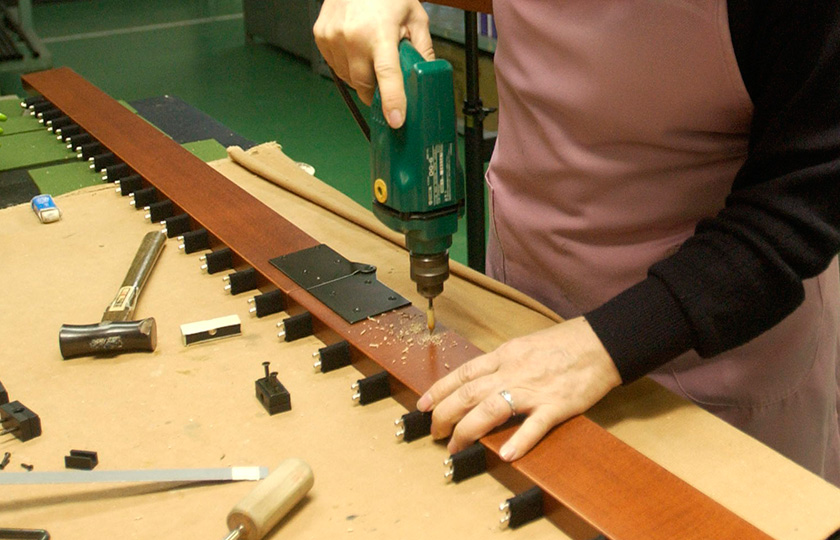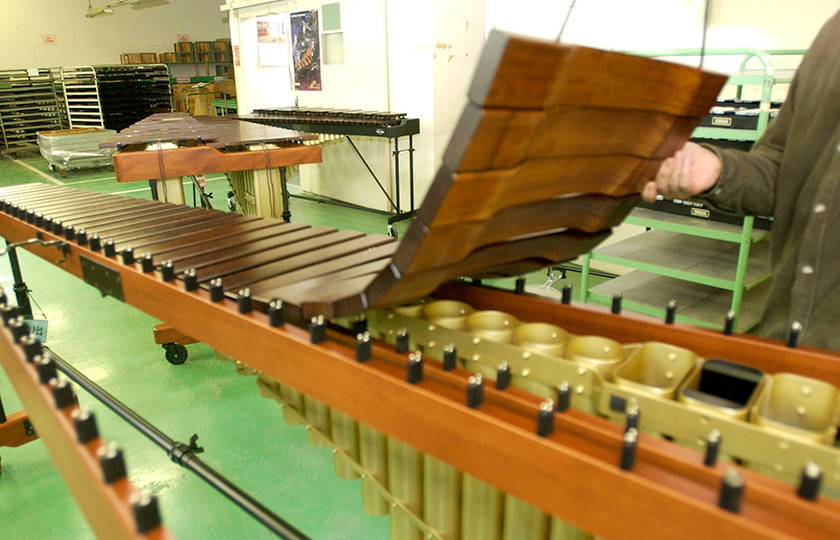How a Marimba is Made
Painting and assembly
A thin coat of paint that allows the wood to breath
Right after tone plates are finished being tuned, they are painted. Unlike when painting furniture, a thin coat is applied so as to leave the grain of the wood as intact as possible. If the wood is allowed to breath, it will gradually dry out, and will gradually start to sound better and better as the instrument is played. It is ideal if a player keeps playing in the same manner: This will gradually change the timbre of the instrument over many years, becoming a sound unique to that player.
Attention also paid to matching colors
Attention is paid to matching colors when applying the paint. Rosewood is sometimes strongly colored and sometimes more lightly colored. To make sure that the colors match when the instrument is finished, adjustments are made to the paint. In other words, not all tone plates are painted the same way. The undersides are unpainted, so looking there reveals the color differences in the original wood.
Wood is also used for the frame
Metal bar-posts for hanging the suspension cord are affixed to the frame, along with other metal fixtures, in accordance with the widths of the tone plates.
The frame that supports the tone plates is made of European beech solid wood. Because it allows the frame itself to resonate, wood is the best material for the sound.

A frame being assembled
The frame can be folded in two!
The structure of a concert marimba allows it to be folded in two. The marimba is, after all, designed based on the premise that it will be brought into different venues to be played on a variety of stages. Thus, the frame that holds the tone plates can be folded in half, meaning that the resonator pipes can be taken apart and removed. The instrument is thus designed so that the tone plates can be rolled off from the frame and the overall instrument can be made into a compact package.

The front and back rows of tone plates each form a chain, which can be easily removed
Musical Instrument Guide : Marimba Contents
Origins
Structure
- What kind of instrument is the marimba?
- Inside and outside the resonator pipes
- There is craft to the design of the tone plates, too
- [Experiment1]Tone plate sanding depth and sound pitch experiment
- [Experiment2]Tone plate sanding location and sound pitch experiment
- [Experiment3]Try changing the material of the resonator pipes
